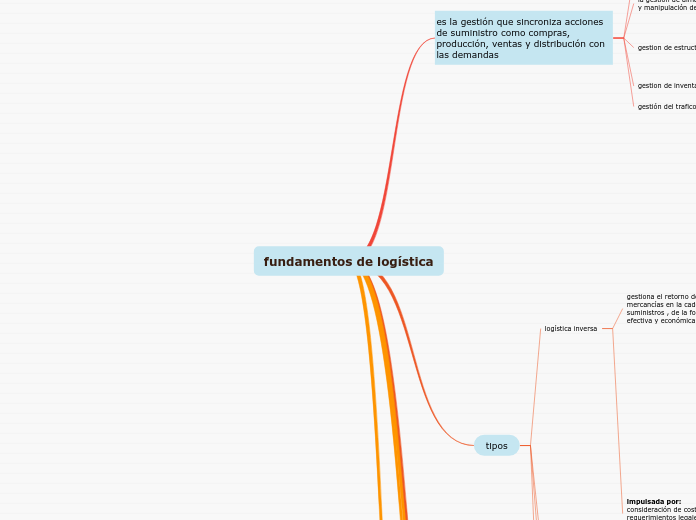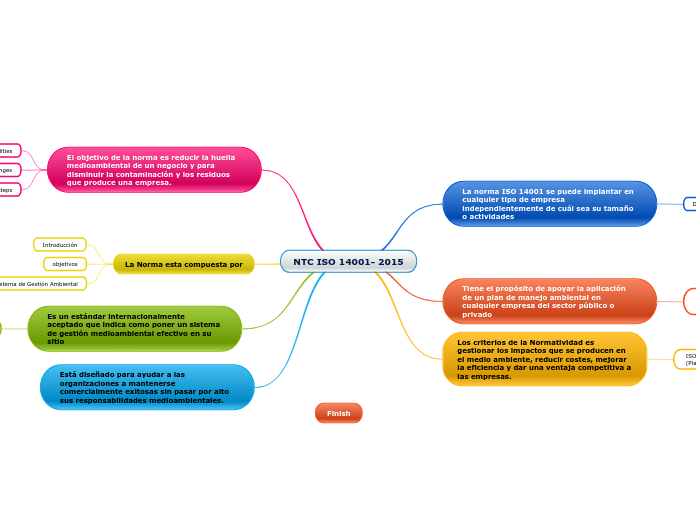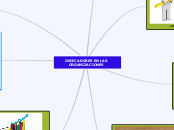fundamentos de logística
To name your story, you have to think about the overall message and what you want your audience to understand from the story. Also, make it relevant and easy to remember.
distribución
es la planificación y el control del movimiento físico de materiales y productos terminados desde los lugares de fabricación hasta los sitios de consumo
Básicamente, el aprovisionamiento en logística consiste en suministrar recursos, es decir abastecer. Este es el primer eslabón en la cadena de suministro. Ejemplos de esta actividad son muy comunes en distintos tipos de empresas.
En este proceso se gestionan los suministros requeridos para la fabricación y venta de productos elaborados, y materias primas, para asegurar el desarrollo óptimo de la secuencia que termina con la entrega del producto al cliente.
almacenamiento
La logística de almacenamiento trata tareas como colocar y guardar los aprovisionamientos recibidos, mantenerlos en correcto estado, así como procurar que el depósito de todos estos elementos redunde de manera positiva en la actividad de la empresa.
Es decir, no solo tratan de almacenar, también tratan de que el almacenaje sea eficiente. Así pues, por poner un ejemplo, no tiene mucho sentido colocar y guardar todo perfectamente, pero desordenado. Sería un caos.
The ending of a story is essential. We all know that if the ending is weak, what happened before loses its importance. So make it unpredictable, but fair. A resolved ending answers all the questions and ties up any loose threads from the plot.
Hablar de transporte en logística es hablar del movimiento de la carga en todos sus modos: aéreo, marítimo, terrestre, mediante los cuales se trasladan insumos, materias primas y productos terminados de un punto a otro según la planificación de la demanda.
This is the moment when the main character surpasses the last obstacle and finally faces their greatest challenge.
The climax usually follows one of these patterns:
- realization
- resolution
- choice
Type in your answer.
planeación
es un plan de acción consensuado por todas las partes implicadas en el que se establecen los objetivos logísticos de la compañía. Abarca desde el aprovisionamiento de materias primas necesarias para la producción del producto hasta la gestión de las entregas de mercancía a los clientes
tipos
The middle of the story is where you add layers of complications that will lead to the end. Reveal more about the character's journey. Did their personality go through changes? How did they overcome the challenges? And as you build up the story’s central conflict, make it more personal to that character. Also, from the middle act, you have to lead into the final act.
logística integral
Your character(s) need(s) motivation in order to solve the challenge(s).
hay varios tipos
Secondary characters also might have motivs beacuse of which they may cross path with main character or which might trigger them to help the main character.
Logística de almacén
Logística de transporte
Logística Aduanera
Logística de distribución
Logística de adquisiciones
Logística de información
Logística de stock
es un modelo de organización y de gestión que aborda de manera global y sincronizada los diferentes departamentos, procesos, recursos y flujos relacionados con hacer llegar el producto final hasta el cliente
Secondary characters might also have motives that lead them to cross paths with the main character or which might trigger them to help the main character.
clientes externos
proveedores externos
logística interna
Suson las acciones y las actividades que se llevan a cabo para ordenar y organizar los flujos de materiales y de información, con el objetivo de garantizar un correcto servicio al menor costo posiblebtopic
producción
aprovisionamiento
logística inversa
Each story has a main character and that character usually needs to solve a problem or challenge. The character's challenge is the one that creates tension throughout the story.
impulsada por: consideración de costo beneficio requerimientos legales responsabilidad social
gestiona el retorno de las mercancías en la cadena de suministros , de la forma mas efectiva y económica posible
la recuperación y reciclaje de envases y residuos peligrosos
transporte
es una etapa de la cadena de suministro que tiene lugar después de la entrega de mercancía al cliente final, y su objetivo es devolver el producto desde el cliente hasta el distribuidor o el proveedor.
Medición y Control: Deben medirse y controlarse diversos elementos de cada una de las etapas del proceso, evaluarlas y planear soluciones para cada ocasión. Algunos posibles indicadores serían: El coste total de la gestión, el coste de almacenamiento y transporte y la cantidad de residuos que finalmente se acaba recuperando.
Transporte y Almacenamiento: En este punto se debe tener en cuenta la frecuencia de recogida y sus horarios, los equipos y el personal que se verán implicados y las rutas que se van a seguir
Tratamiento o Destino: Una vez identificada la estrategia a seguir se realiza el tratamiento, que puede ser de distintos tipos:
Vertido sin Control
Relleno Sanitario
Incineración
Reciclado
Estrategia: Se determina cuál es la estrategia que debe seguir el residuo. Para ello, es importante contar con la ayuda de especialistas y consultar todas las normativas a nivel nacional e internacional. Además, uno de los puntos importantes es analizar los costes que genera el tratamiento
Clasificación de residuos: En esta fase se evalúa el residuo teniendo en cuenta diferentes criterios como son su estado, el grado de peligrosidad, su origen, el grado de control que existe sobre ese residuo, sus características y el almacenamiento temporal
Fuentes de generación: Se realiza un análisis de las fuentes de emisión de los residuos que genera la empresa y de los clientes potenciales que los recibirán al final del proceso.
Diagnóstico: Se trata de un diagnóstico medioambiental de la situación de la empresa a través de una inspección rigurosa. Se analizan las pérdidas, residuos, desechos y entradas al sistema.
es la gestión que sincroniza acciones de suministro como compras, producción, ventas y distribución con las demandas
In the beginning of the story (or the exposition), you will need to introduce the setting and characters. You might also want to introduce the main conflict. This part of the story is important because it gives the reader necessary background information and maybe even a first insight into a character’s personality.
gestión del trafico y transporte
The setting (time & place) of a story can change throughout the plot.
movimiento fisco de los materiales
Your story can take place wherever your imagination will take you to.
For example: in an elevator, in an enchanted forest, etc. Don't forget to give details of the environment each time the setting changes, otherwise, the story can be confusing. Also, mention the seasons as each of them has unique weather and events.
gestion de inventario
responsabilidad de la cantidad de surtido de materiales
gestion de estructura de la planta
planificación estratégica del numero
ubicación
tipo y tamaño de las instalaciones de distribución
la gestión de almacenamiento y manipulación de materiales
utilización eficaz del terreno destinado al inventario
medios manuales, mecánicos, o automatizados
gestión de las comunicaciones y de la información
acumulación, análisis, almacenamiento y disfunción de datos puntuales










